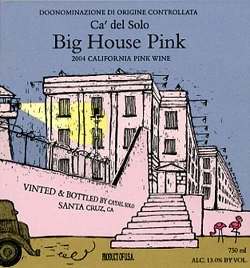 |
|
Wine Details
Price:
Description:
In a time where “red state” and
“blue state” have divisively entered the
popular vernacular, it is heartening to
observe that every corner of the US
has the potential to be a “pink state.”
Let all the al fresco café habitués take a
bow—pink wine appears finally to be
à la mode. Rarely has a wine evacuated
the premises like our first Big House
Pink.Who could have guessed that
pink wine would take the country by
storm? Might the lurid carmine
integument have something to do
with it? The flock of flamingos? The
strong spring season in South Beach?
Or could it actually be a sign
that Fortuna’s wheel has
turned and sophisticated,
dry rosé now enjoys a
similarly sophisticated
clientele?
In this vintage we again
congregate a blend of primarily
Italian varieties—the oft neglected
Sardinians represented herein by
carignano—along with a dash of
zinfandel and charbono, which, if it is
not Italian, certainly should be.
Unlike the more cerebral Vin Gris
de Cigare, in Big House Pink the
front and center fruity notes
dominate most of the organoleptic
real estate.This pink is flush with
strawberry guava and hibiscus
notes. And those who fondly
remember Jolly Rancher
watermelon candies will
|
|
|